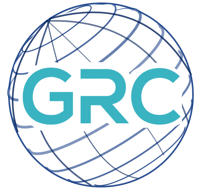Can Microfinance Improve Sustainability?
Background on Microfinance
Originally pioneered by Muhammad Yunus in 1976 in Bangladesh, microfinance is a banking service targeted at low-income and vulnerable groups who face significant barriers to accessing financial services such as licensure laws and minimum savings requirements. Microfinance institutions (MFIs) provide recipients with micro-loans, ranging from USD 100-25,000 and a range of additional products including checking and savings accounts, lines of credit, micro-insurance products and financial and business education services. Ultimately, microfinance strives to help vulnerable groups become self-sufficient.
Microfinance is a key support for the global unbanked population, proving low-income, vulnerable people are bankable and creditworthy. According to the World Bank, nearly 1.7 billion people worldwide are unbanked, mostly residing in rural communities in Southeast Asia, sub-Saharan Africa and Central America. Individuals and business owners of all income levels need access to financial services to run companies and be consumers, although many face major credit constraints. The global poor face the same challenges and risks in operating their businesses as those in developed countries, and they are especially vulnerable to incurring a financial loss and falling into a vicious cycle that inhibits their welfare. According to World Vision, 689 million people globally live on less than $1.90 per day. With income this low, it is extremely difficult to cover individuals’ basic needs, let alone accumulate savings. The savings products offered by microfinance are integral in providing low-income populations with the potential to accrue wealth.
While microfinance tackles many of the UN’s Sustainable Development goals such as no poverty and decent work and economic growth, it also has the ability to improve the sustainability of households and small and medium-sized enterprises (SMEs) in developing countries and ensure the industrialization of sub-Saharan Africa takes on a climate-friendly model. The UN Development Programme suggests collaboration between MFIs, civil society, governments, and the private sector to implement sustainable development and promote economic diversification in sub-Saharan Africa.
Microfinance Itself is Green
According to Scientific American, microfinance itself is green because it supports the development of businesses which can be sustained indefinitely. Additionally, microfinance fosters financial inclusion by providing low-interest microloans and micro-insurance products which help reduce poverty and promote socioeconomic development, allowing people to earn a living sustainably, and prevent severe poverty and malnourishment which results in people pillaging their surroundings in search of natural resources for food and housing.
Microfinance institutions (MFIs) need to be carefully legislated by the banks, NGOs and credit unions which back them to ensure they have sustainable mandates. MFIs should focus on providing loans to people who run safe and sustainable businesses that do not have significant detrimental effects on the environment.
Green Microcredits
To use microfinance to promote sustainable business and household development, MFIs should design a system of microcredits - small amounts of credit, usually to start new ventures. These credits should be provided to very low-income households and SMEs in developing countries which are generally considered un-bankable and support their investments in renewable energy and energy efficient technologies and climate change adaptation and/or mitigation tactics.
For example, MFIs could partner with impact investors and charities to provide loans incentivizing waste management and recycling programs, organic production methods, sustainable agricultural technologies that minimize water usage and ecotourism programs. Businesses with sustainability action plans could be prioritized in receiving microloans and access to credit.
Microloans for Businesses with Sustainable Mandates
While the concept of green microfinance is still an emerging idea, it refers to the power of the global network of MFIs to improve access to sustainable products and services that benefit and improve the lives of the poor.
To capitalize on this, MFIs could promote loan packages for businesses and homes seeking loans in the energy sector, recycling, water usage or agriculture, for example, to improve the accessibility of solar solutions such as lanterns and modern, energy efficient ovens. This is directly in line with the mandates of many socially conscious MFIs who have the goal of not only providing financial services, but also improving the living conditions of their clients.
To ensure the success of green microfinance, MFIs should institute a component of sustainability as a precondition to awarding new clients loans. Since many small-scale agricultural entrepreneurs rely on microfinance to access capital, with sustainability to incentivize a loan, they will be further inclined to purchase equipment that is more energy and water efficient.
Proof of Microfinance Concept for Sustainable SMEs
German investment and development bank KfW recently instituted a program that provides low-interest loans to SMEs, solely for investments in energy efficiency. This program demonstrates the power of banks as backers of MFIs to support sustainable growth by prioritizing sustainability and efficiency in banking priorities and new investments.
Individual consumers can support firms that invest in sustainable microfinance by looking at ESG indexes. The Egyptian Stock Market recently launched its own index, allowing investors to compare the ESG impact of their portfolio. For microfinance to remain sustainable, it would be beneficial to note whether these indexes support green MFIs.
Conclusions
While the overarching priority of the microfinance industry should continue to be working to eliminate financial exclusion, inequality and poverty, the industry should prioritize climate-forward initiatives when providing banking to a new segment of the population.
Although green microfinance is still in its early days, to successfully implement sustainable lending practices, there needs to be strong industry partnerships, for example between MFIs and energy efficient oven manufacturers or recycling businesses. However, it is crucial to make these partnerships carefully and pilot them over time to ensure the implementation is not beyond the scope of MFIs.
Sources
https://www.scientificamerican.com/article/how-microfinance-loans-help-earth/
https://sustainableagriculture.net/blog/micro-lending-can-do-big-things/
https://ideas4development.org/en/green-microfinance-solution-access-essential-services/
https://www.oecd.org/greengrowth/GGSD_2018_SME%20Issue%20Paper_WEB.pdf
https://www.sdgfund.org/financial-services-sustainable-development
https://www.africa.undp.org/content/rba/en/home/sustainable-development.html



